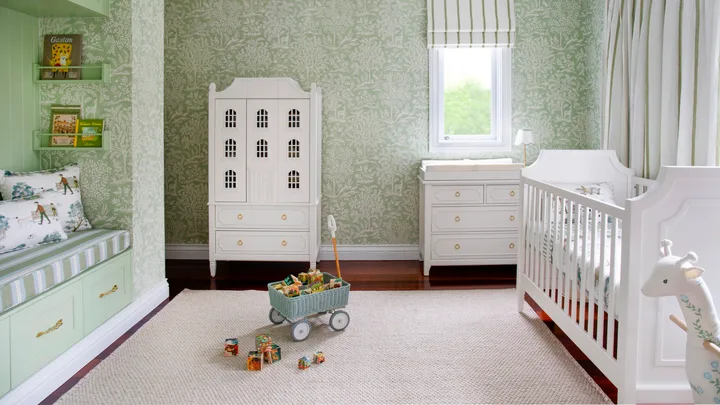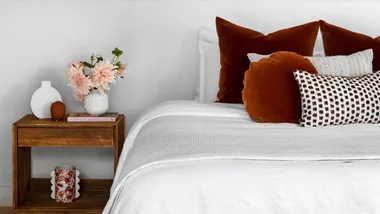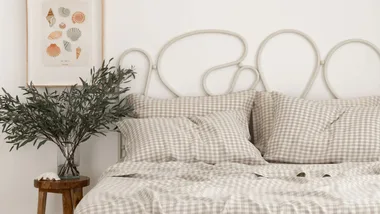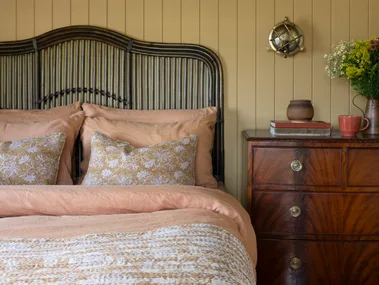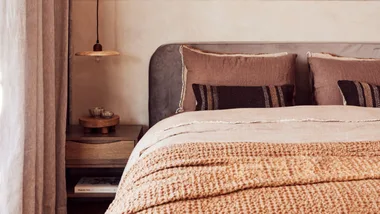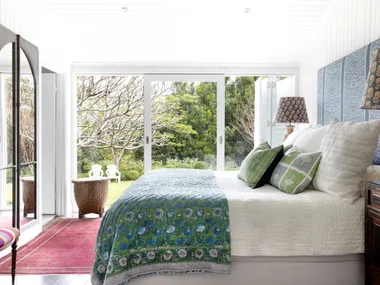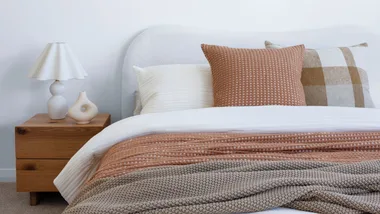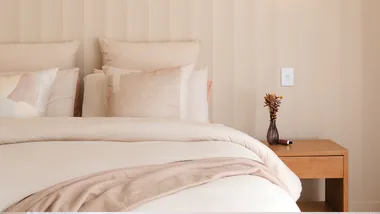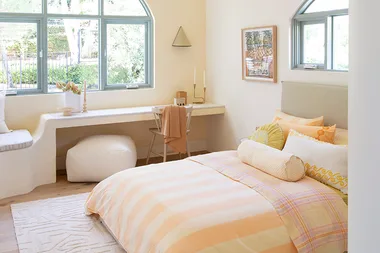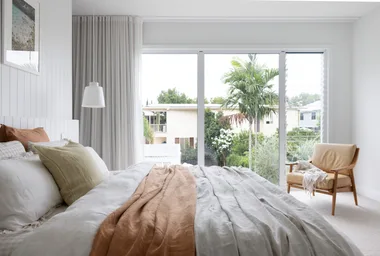Decorating can be a delight, especially when it comes to children’s bedrooms. Most little ones prefer colourful, creative spaces so it’s an opportunity to truly let your imagination run free. Play with pattern, pick a lively palette and, for truly individualistic interiors, incorporate a few vintage pieces.
Of course, all children grow up and as such, one of the most important considerations is longevity. Consider decor that is easily adaptable as your child develops. Stripes and checks are perennial favourites, and a velvet bedhead can be updated with increasingly sophisticated linen. Most importantly, don’t be afraid to embrace your inner child.
Clever furniture
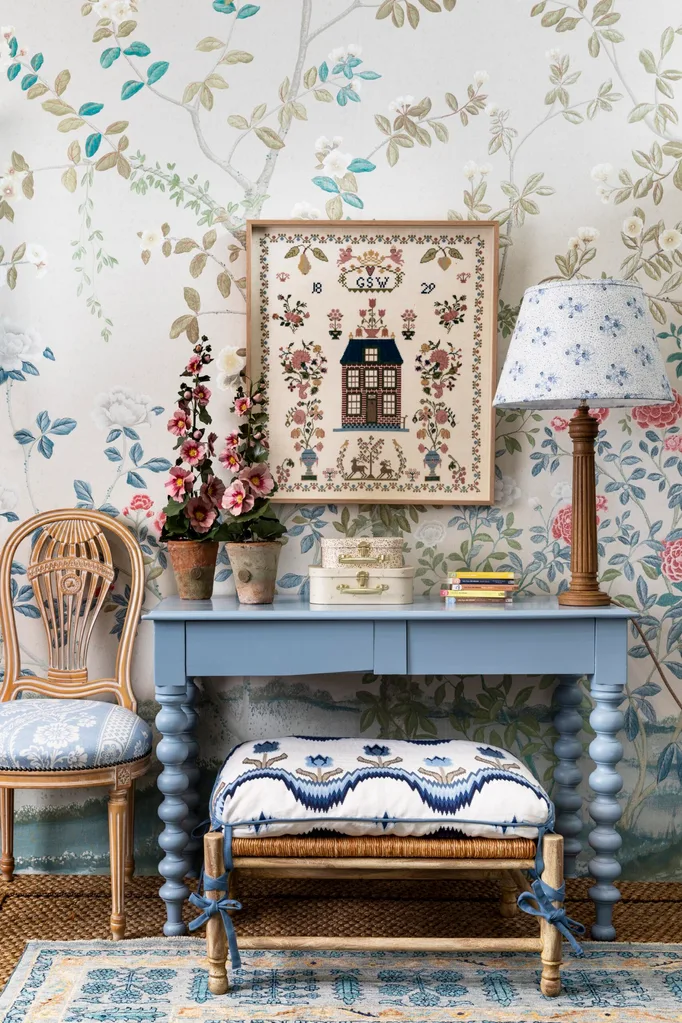
Children’s furniture has to be hardy enough to withstand play. As such, Amy Spargo of Maine House Interiors used vintage pieces in her daughter’s bedroom, including rugs. “They’re well-constructed and have already been used, so you don’t have to be too precious,” she says. “Also, they lend a sophistication, preventing the room from becoming too babyish.”
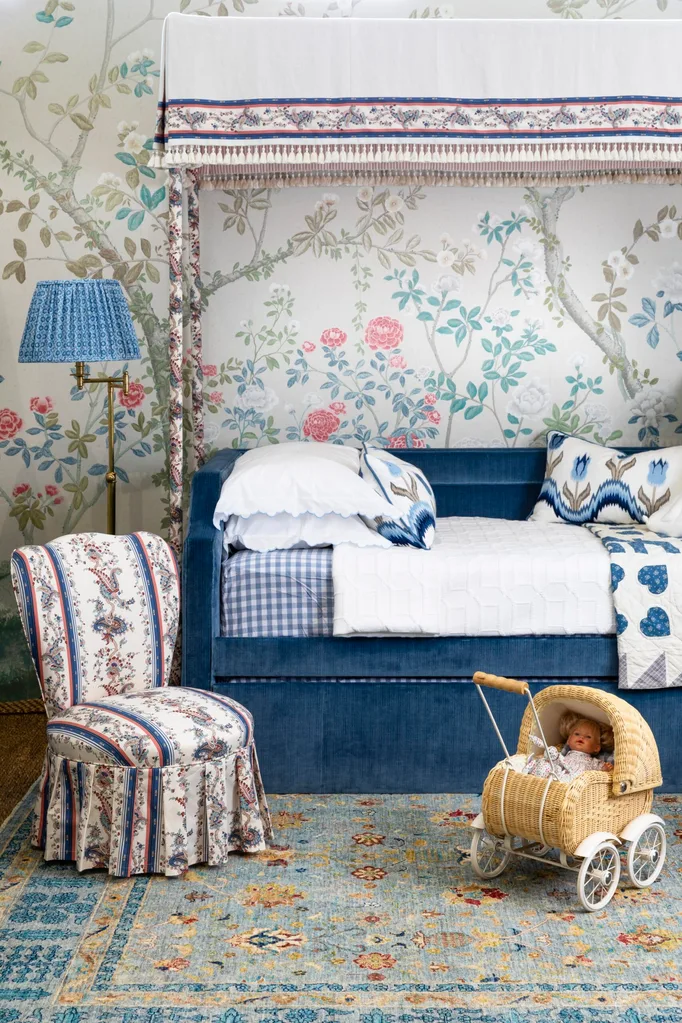
Another clever inclusion is multi-purpose furniture. “We designed my daughter’s bed to also function as a daybed, or a sofa,” says Amy. The canopy is dowel wrapped in ‘Elena Paisley Stripe’ and topped in ‘Piet Performance Linen’, both from Schumacher.
Window treatments
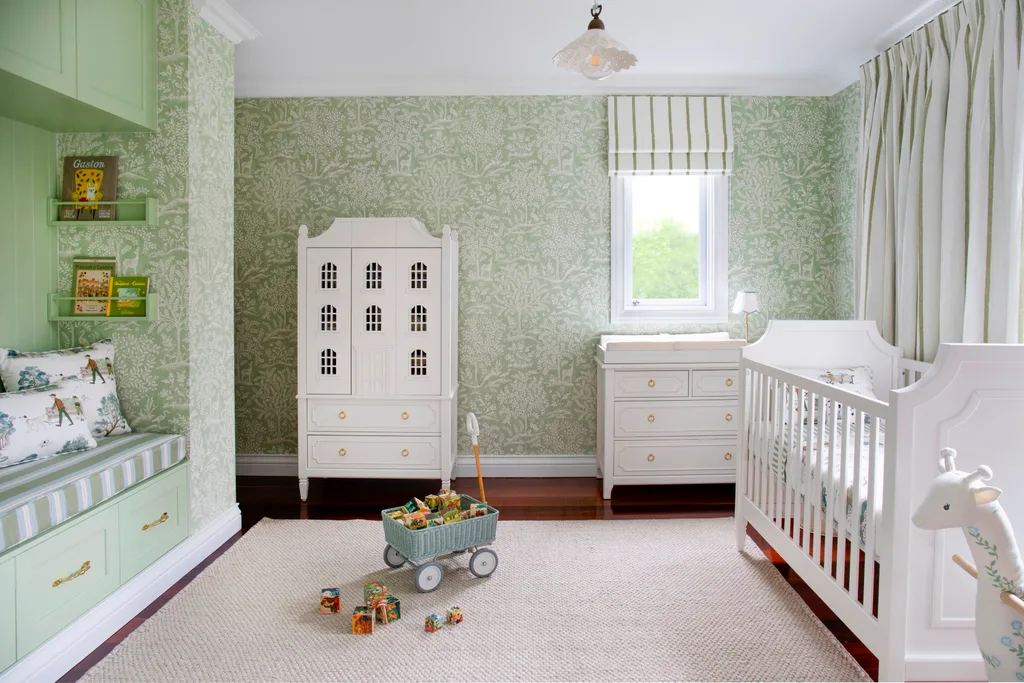
Unfortunately, there are no guarantees when it comes to a child’s sleep schedule but window dressings, which effectively block natural light, are a start. Tahn Scoon of Tahn Interiors says of the dressings in this nursery, “curtains and blinds are heavily lined and go a little beyond the architraves.”
The starting point for this space was the ‘101 Dalmatians’ fabric, a collaboration between Disney Home and Sanderson. The playful illustrations are used on the bedding and cushions.
Alcoves and nooks
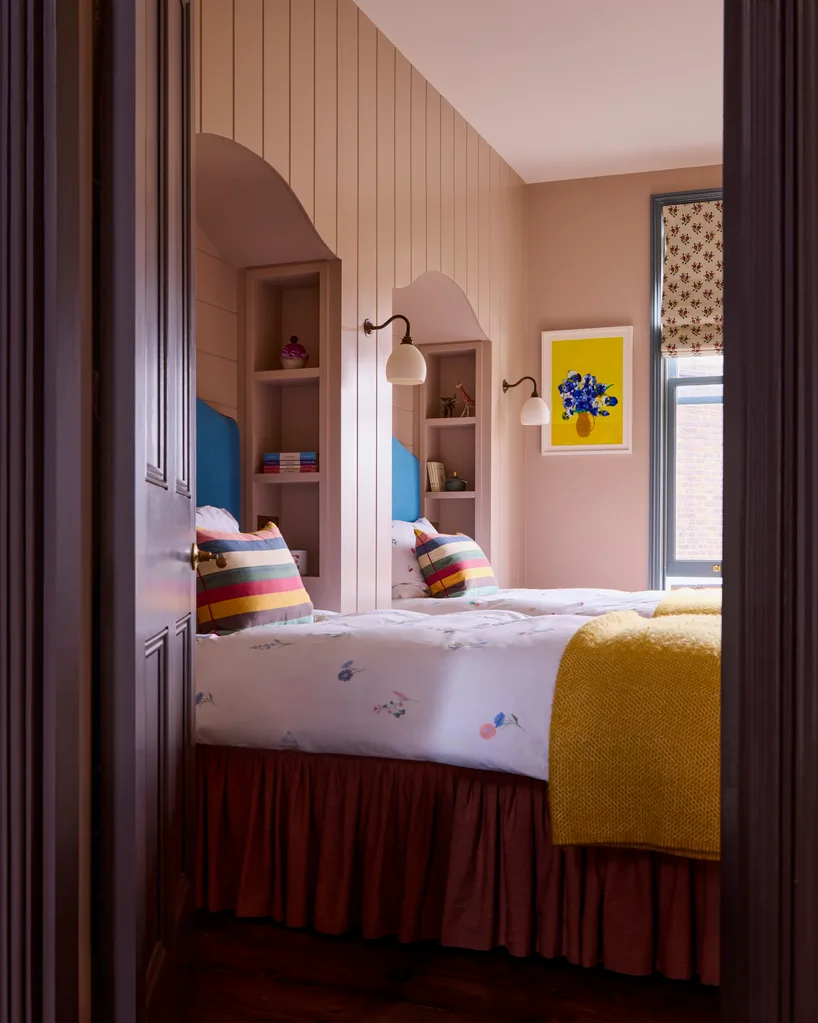
Alcoves are a clever way to create a sense of privacy and zoning in shared bedrooms. This bedroom by Anna Haines of Anna Haines Design is shared by two young sisters. The nooks were cleverly created to house the girls’ beds. For extra cosiness, the front of the nooks are clad in vertical tongue and groove, while the recessed walls utilise horizontal panelling. Shelves allow each child to personalise their own space. “The girls are charmed by the nooks,” says Anna.
“The nooks strike a good balance between function and design” Anna Haines, interior designer.
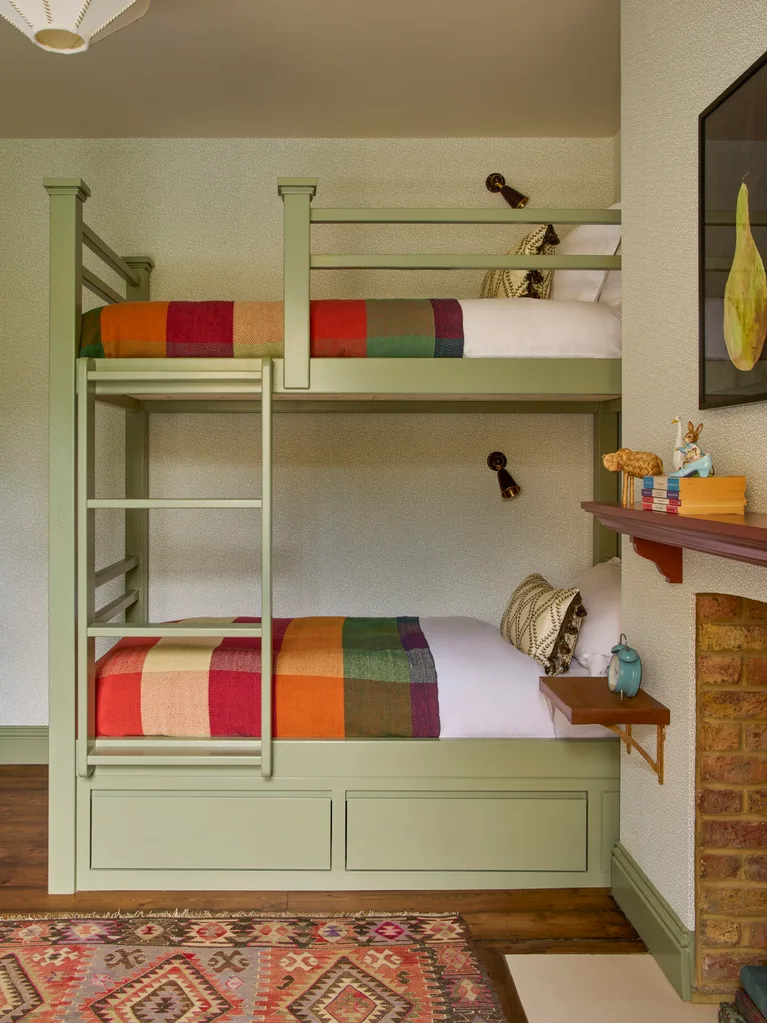
Two of the most effective ways to save space are incorporating bunk beds and utilising clever, built-in storage. Anna Haines has managed to combine both in this young boy’s room. “We wanted the bunks to feel robust and refined. The two large drawers at the base feature finger pulls, avoiding the need for knobs and making them accessible for little hands,” says Anna. The blankets and rugs are vintage finds while the pear artwork was done by the 7-year-old.
Extra sleeping space
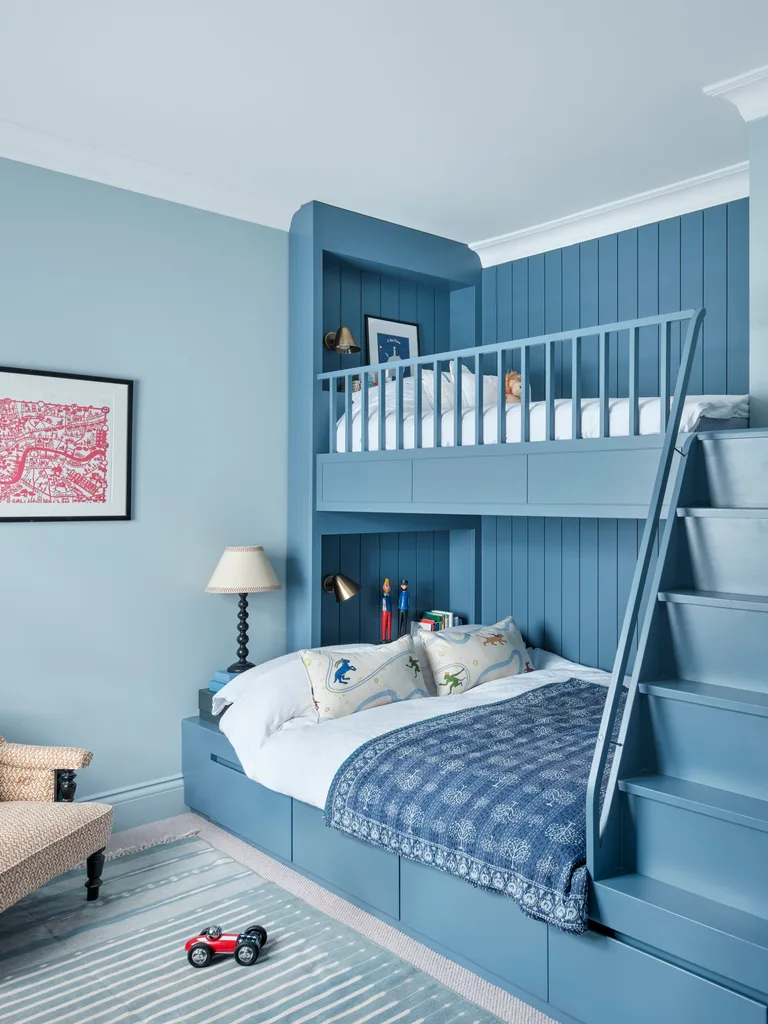
Sleepovers are often the highlight of a child’s social calendar but it can be hard to create a room that caters to extra sleeping space without impeding daily function. In this bedroom, Claire Sá, director of De Rosee Sa, used a single-over-double bunk configuration as it achieves this purpose without overcrowding. Stairs connect the bunks instead of a ladder.
“The stairs offer greater safety for younger children,” she shares, adding that the “ensuite provides a sense of comfort and independence.”
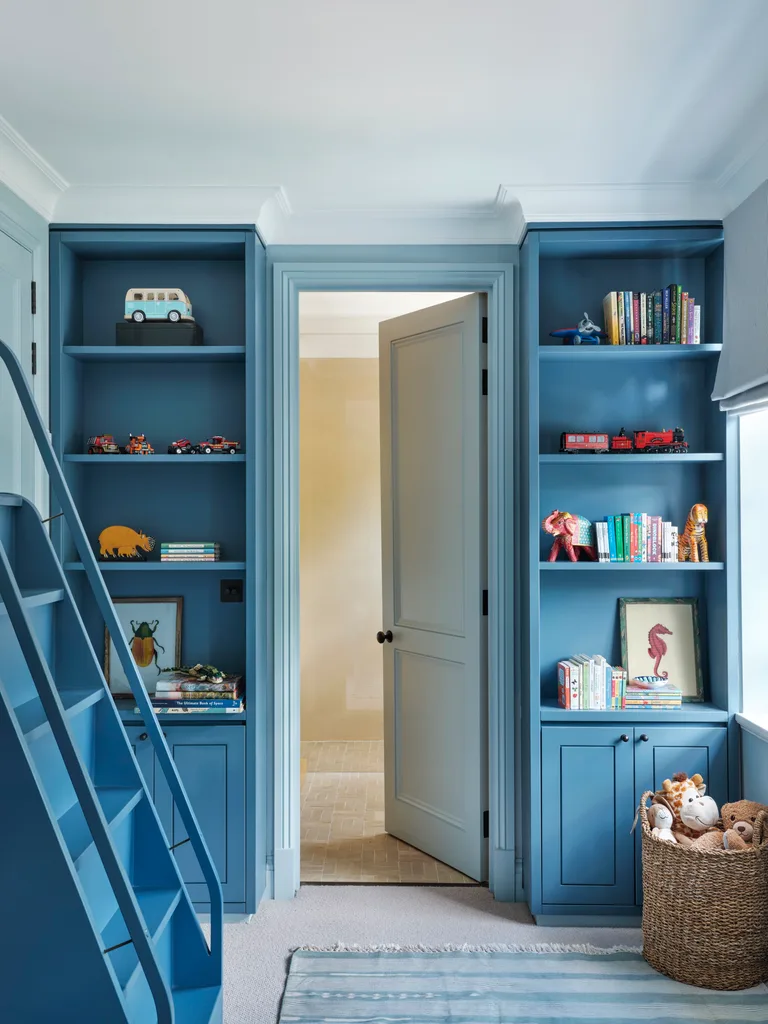
Magical touches
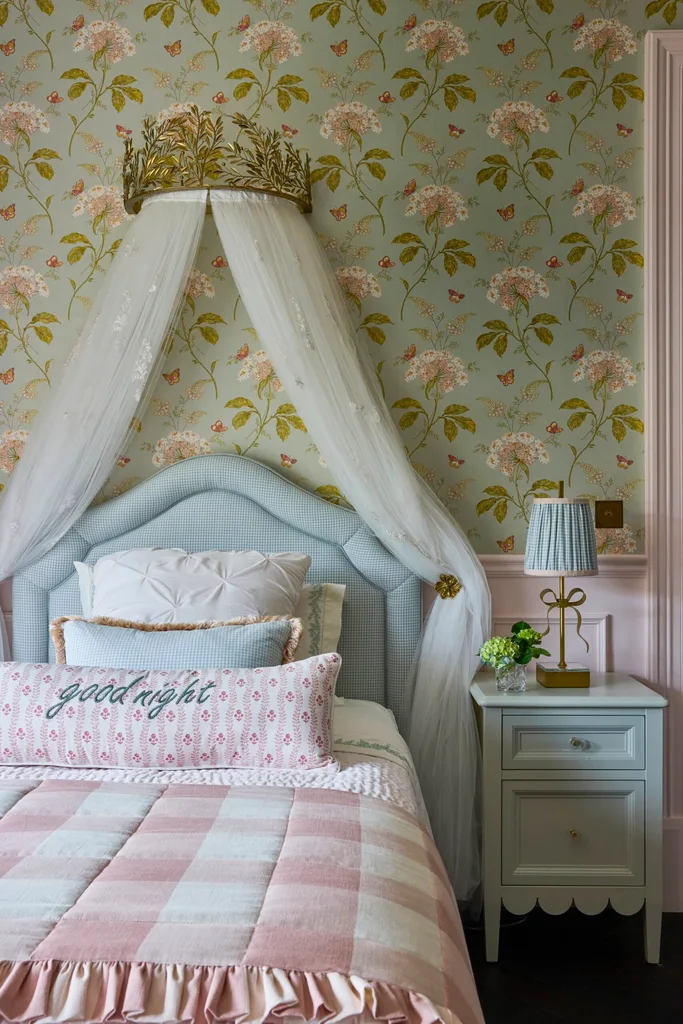
Aerin’s my only daughter so I leaned into the princess theme with a crown canopy” Lauren Mahoney, interior designer.
Lauren Mahoney of Studio Trio gave her daughter the royal treatment with a crown canopy from Pottery Barn Kids. While decorative, it had a practical purpose. “We have a heritage Federation home, and the ceilings are 3.2 metres high,” says Lauren. “The canopy draws the eye up and helps fill the space.”
Jane Churchill ‘Messina’ wallpaper adorns the walls above wainscoting, finished in Resene Dust Storm. “Walls are often overlooked but they can really elevate your interiors,” says Lauren.
